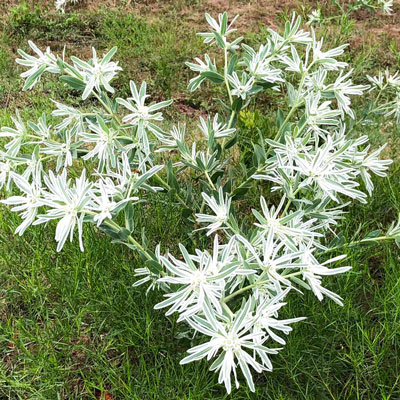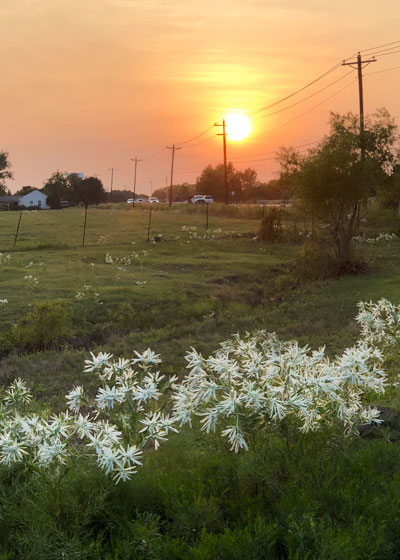There’s snow on that prairie!
Just when you thought that wildflower season had boiled down to sunflowers, up popped these pristine beauties known as “snow-on-the-prairie” and the very similar (and wider-leafed) snow-on-the-mountain.

Respectively, they’re Euphorbia bicolor and E. marginata, and they seem to appear out of nowhere to cover large pieces of ground with their cooling white floral bracts (not really true flowers). And therein might lie the clue to their famous sister, our best-selling potted plant in America, the Christmas poinsettia (E. pulcherrima).

This is a huge genus of plants, all with the unusual flower structure called the “cyathium.” It’s shaped like a cup, and it’s found in the center of all the more colorful floral bracts. The bracts are actually just modified leaves.

Snow-on-the-prairie and snow-on-the-mountain are both annual Texas wildflowers. They grow best in full to partial sun, and they are usually found growing in poor soils that are lacking in fertility. Because of that they face little competition from nearby weeds, and the plants themselves are usually somewhat spindly.
If you grow them in fertile, overly wet garden soils the plants are likely to become lush and vegetative with few flowers.
Once established from seed, they should resow themselves year after year.


